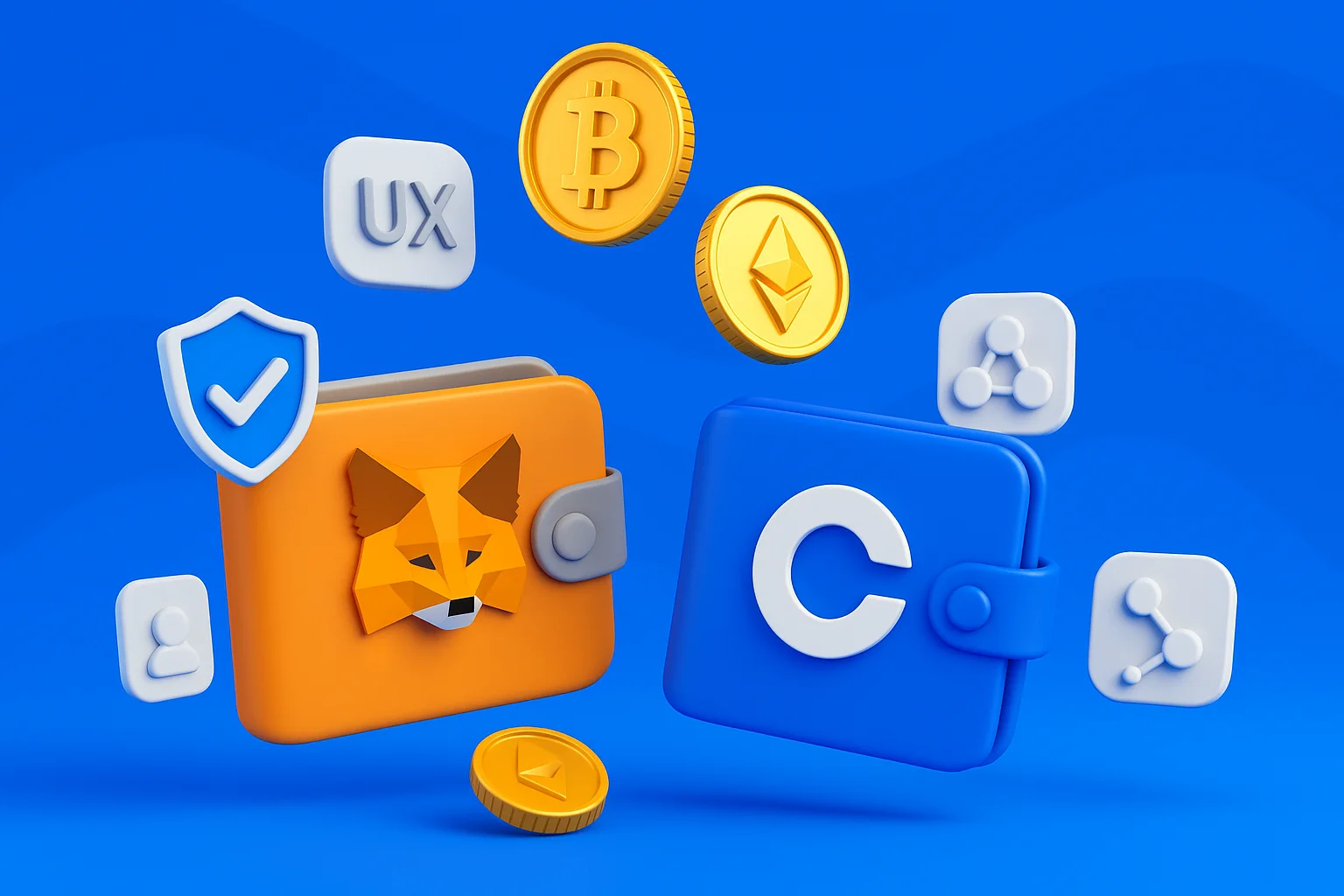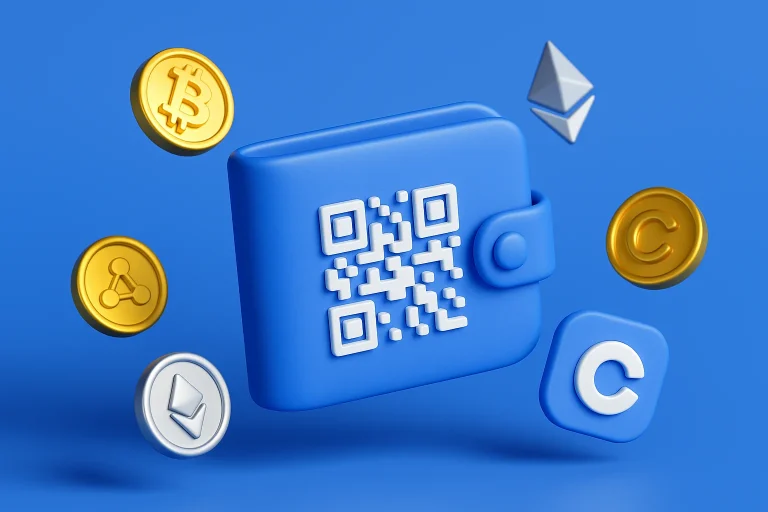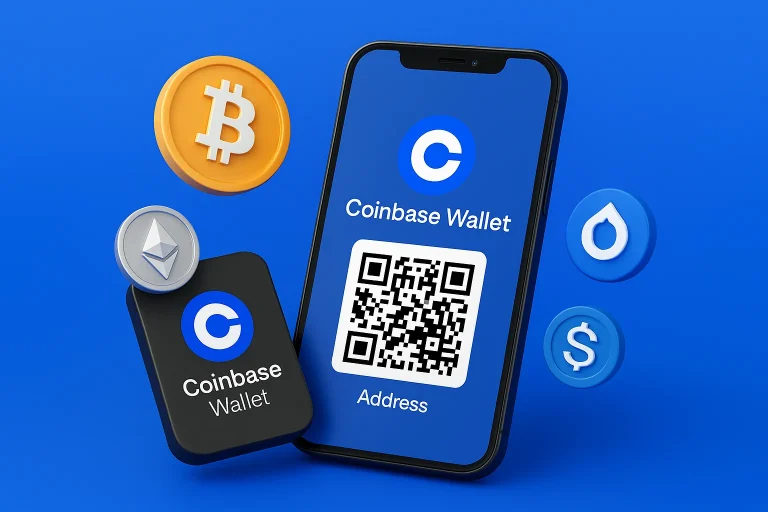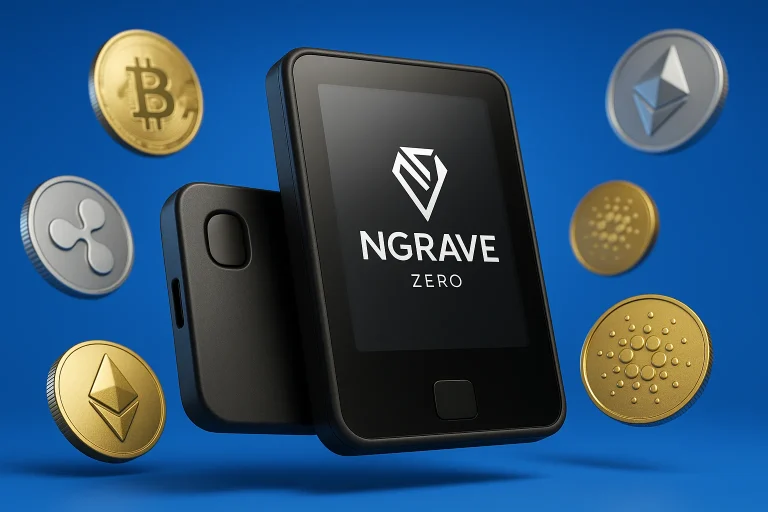Choosing the right crypto wallet in 2025 can feel like a challenge. With so many options available, two names consistently stand out: MetaMask and Coinbase Wallet. Both promise strong security, full user control, and easy access to the Web3 world.
But the reality isn’t always that simple. Many users get frustrated by high gas fees, confusing interfaces, or limited asset support. Others worry about losing their funds because of weak backup options or unclear recovery steps.
That’s why we created this MetaMask vs. Coinbase Wallet comparison, to help you make an informed decision. We’ll examine everything that matters: security, supported networks, usability, and genuine user feedback. By the end, you’ll know exactly which wallet fits your crypto lifestyle best in 2025.
Quick Overview: MetaMask or Coinbase Wallet |
|
|---|---|
| MetaMask | Best For: DeFi, NFTs, and EVM chains; Type: Non-custodial Web3 wallet (browser extension wallet); Supported Networks: Ethereum, Polygon, BNB Chain, Arbitrum; KYC: Not required; Platform: Browser extension & mobile device app; Open Source: Yes. |
| Coinbase | Best For: Beginners and Bitcoin holders; Type: Non-custodial wallet integrated with Coinbase; Supported Networks: Ethereum, Bitcoin, Solana, and EVM chains; KYC: Not required (only when linked to Coinbase); Platform: Browser extension & mobile app; Open Source: Partially closed source. |
What Is MetaMask?

MetaMask is a decentralized, non-custodial wallet built by Consensys, primarily focused on Ethereum and other EVM-compatible blockchains. It serves as a gateway to Web3, enabling users to:
- Store and manage digital assets and NFTs;
- Connect directly to decentralized applications (DApps);
- Swap tokens through integrated DeFi services.
MetaMask’s browser extension and mobile app provide full control over private keys, allowing users to add custom networks, including BNB Chain, Polygon, Arbitrum, and Avalanche. As of 2025, MetaMask boasts over 30 million active users, making it one of the most trusted cryptocurrency wallets in the crypto space.
To receive crypto in your Coinbase Wallet, follow these simple steps in our Coinbase wallet address guide.
What Is Coinbase Wallet?
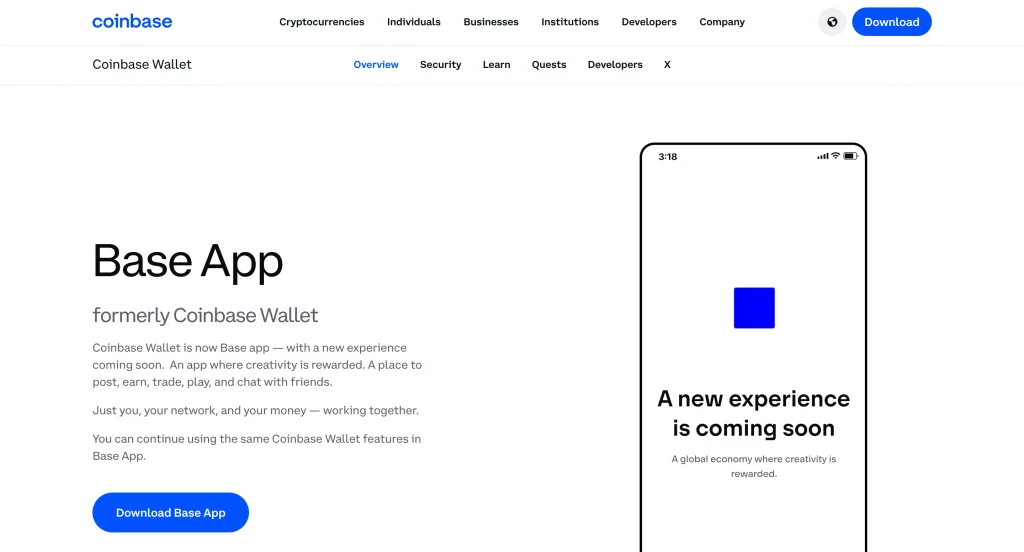
Coinbase Wallet, developed by Coinbase, is a self-custodial wallet that combines a user-friendly wallet design with robust multi-chain functionality. Unlike the Coinbase Exchange, the wallet gives users complete ownership of their private keys, meaning Coinbase has no access to their assets.
It supports a broader range of assets, including:
- Bitcoin (BTC) and Solana (SOL), while MetaMask does not endorse them;
- Ethereum and all primary EVM-compatible tokens;
- NFTs from multiple blockchains.
Additionally, Coinbase Wallet integrates optional cloud backups and encryption, allowing users to securely store their seed phrases in Google Drive or iCloud, a feature particularly appreciated by less tech-savvy users.
MetaMask vs Coinbase Wallet: Feature Comparison
When comparing MetaMask vs. Coinbase Wallet, it’s essential to look beyond popularity and examine the key differences in how each performs. Both wallets are non-custodial and designed to give users control over their crypto assets, but they take different approaches depending on your needs.
1. Security
Both wallets prioritize user safety, but their methods differ slightly. MetaMask gives you full control of your private keys; everything stays on your device, not on a server. This makes it more decentralized, but also places the responsibility on you to manually secure your seed phrase. If you lose it, there’s no way to recover your funds.
Coinbase Wallet, while also non-custodial, adds an extra layer of convenience by offering encrypted cloud backups. This helps users who fear losing their recovery phrase. However, these backups can create a small exposure risk if your cloud account isn’t well-protected.
Both wallets are non-KYC, meaning you don’t need to verify your identity unless you use external on-ramp services. MetaMask is fully open-source, which increases transparency, whereas Coinbase Wallet contains closed-source elements, relying on Coinbase’s strong security practices and reputation.
Verdict: MetaMask appeals to privacy-focused users who want full control, while Coinbase Wallet provides a safer learning curve for beginners.
2. Supported Assets & Networks
MetaMask is built for EVM-compatible blockchains, supporting Ethereum, Polygon, Arbitrum, Avalanche, and similar networks. It’s beneficial for users active in DeFi and NFTs, but it doesn’t support native Bitcoin.
Coinbase Wallet, however, supports Bitcoin, Solana, Dogecoin, and EVM chains, indicating broader cryptocurrency support. It’s the go-to for users with diverse portfolios and provides easy integration with the Coinbase exchange for quick transfers.
Verdict: Coinbase Wallet supports more native assets, but MetaMask wins in Web3 network flexibility.
3. User Experience & Interface
When it comes to usability, Coinbase Wallet takes the lead. Its clean interface, simple setup, and direct connection to the Coinbase ecosystem make it beginner-friendly. Users can easily buy, send, and interact with crypto without feeling overwhelmed.
MetaMask, on the other hand, is designed for experienced users who want control over custom networks, gas settings, and token management. While powerful, it can feel intimidating for newcomers, especially when manually adding new blockchains or adjusting gas fees.
Still, MetaMask’s mobile app has improved significantly, offering a user-friendly experience with almost all the same features as the browser extension.
Verdict: Coinbase Wallet is easier to use, while MetaMask offers more flexibility and customization for advanced users.
4. Integration & Ecosystem
MetaMask Wallet dominates the Web3 and DeFi ecosystem. It’s supported by thousands of decentralized applications, including Uniswap, Aave, OpenSea, and Curve. If you’re an active Web3 user, MetaMask is almost essential, as most dApps are optimized for seamless interaction.
Coinbase Wallet, meanwhile, benefits from deep integration with the Coinbase exchange, offering seamless integration for users who trade regularly. You can transfer funds instantly between your Coinbase account and wallet without paying withdrawal fees.
When it comes to device performance, MetaMask’s browser extension is lightweight and works flawlessly across Chrome, Firefox, Brave, and Edge. Coinbase Wallet’s mobile version offers a smoother and more polished user experience, but is slightly more limited on desktop.
Verdict: MetaMask leads the DeFi ecosystem; Coinbase Wallet fits best for users who prefer exchange integration and mobile use.
6. Fees & Transactions
Transaction fees are a key consideration in the MetaMask vs Coinbase Wallet comparison.
MetaMask allows direct token swaps within the app through multiple decentralized exchanges (DEXs). It charges a service fee of around 0.875% per transaction, plus blockchain gas fees that vary depending on network congestion. The advantage is that you can often find better liquidity rates by connecting to multiple decentralized finance (DeFi) protocols.
Coinbase Wallet also supports in-app swaps, but fees tend to be slightly higher, depending on the liquidity provider and network. However, it offers a more seamless fiat on-ramp through Coinbase Pay, allowing users to purchase crypto directly with fiat currency. Something MetaMask relies on third-party providers like MoonPay or Transak for.
Verdict: MetaMask offers lower costs for DeFi users already holding crypto; Coinbase Wallet provides an easier, integrated fiat gateway.
MetaMask vs Coinbase Wallet: Benefits and Limitations
MetaMask and Coinbase Wallet stand among the best non-custodial crypto wallets available today, but each comes with its own strengths and trade-offs. Your choice largely depends on whether you prioritize freedom and customization (MetaMask) or ease of use and multi-chain access (Coinbase Wallet).
Let’s break down their pros and cons to help you decide.
MetaMask
Coinbase Wallet Cons
User Reviews & Experiences
Across Reddit threads, TrustPilot comments, and crypto forums, a few consistent patterns emerge:
1. Ease of Use & First Impressions
Coinbase Wallet frequently earns praise for its smooth onboarding and intuitive interface. Many users report that connecting with the Coinbase exchange makes transferring funds nearly effortless, reducing friction for first-time crypto users.
By contrast, MetaMask is seen as powerful, but also complicated for newcomers. Some users say it took a while to “get used to” customizing networks, gas settings, and properly handling token approvals. Once you’re comfortable, though, its flexibility is appreciated.
2. Fees, Transaction Issues & Network Pain Points
A recurring complaint is the high gas fees on Ethereum when using MetaMask, particularly during periods of network congestion. Some users also complain about failed or “stuck” transactions when gas limits were set too low, forcing them to resubmit or cancel.
On the Coinbase Wallet side, while fewer complaints reference gas issues (since it supports multiple chains), users occasionally report slower performance or hiccups when switching between chains or handling complex transactions.
3. Support, Security, and Trust
MetaMask draws frustration around customer support. Because it’s largely community-driven and lacks dedicated real-time support channels, users often turn to forums or knowledge bases for help.
Coinbase’s support reputation is mixed: some users report receiving fast responses and successful issue resolution, while others mention long wait times or unresolved support tickets. On TrustPilot and in forums, criticism often centers on support responsiveness rather than wallet functionality.
Security concerns surface for both wallets. MetaMask users frequently warn one another about phishing sites, fake decentralized applications (dApps), and malicious tokens. Vigilance and double-checking URLs are common recommendations in Reddit and Telegram communities.
In the Coinbase ecosystem, scams often involve social engineering, such as fake “support calls” that prompt users to transfer funds. A real case: a user lost $36,000 after following instructions from an impersonator claiming to be Coinbase support.
Overall Takeaway
For many users, the tradeoff is clear: Coinbase Wallet excels in convenience and accessibility, making it an attractive option for users who want to dive into crypto without wrestling with complexity. MetaMask, though more daunting for beginners, remains beloved by seasoned users who need full control, customization, and deep DeFi access.
FAQ
Buying ETH on Coinbase is often cheaper because MetaMask’s swap feature includes additional service and network fees. Coinbase typically offers more transparent pricing and lower gas costs for direct purchases. Yet, MetaMask can be more cost-effective for users who already hold crypto and swap within DeFi networks.
Not exactly. MetaMask doesn’t natively support Bitcoin (BTC) since it’s designed for Ethereum and other EVM-compatible networks. If you want to store or send native Bitcoin, Coinbase Wallet or a Bitcoin-specific wallet is a better choice.
Yes. The MetaMask mobile app is available for both Android and iOS and offers the same features as the browser extension. It also includes DApp access, swaps, and NFT management.
No, MetaMask doesn’t require KYC (Know Your Customer) verification since it’s a non-custodial wallet. You maintain complete control over your private keys and identity. However, if you buy crypto through MetaMask’s integrated third-party providers, those services may request KYC for compliance reasons.
MetaMask is a decentralized wallet focused on Web3 and DeFi, providing users with complete control over their assets. Coinbase Wallet, although non-custodial, integrates tightly with the Coinbase exchange and supports a broader range of networks, including Bitcoin. The primary difference lies in usability: MetaMask is suited for advanced users, while Coinbase Wallet is designed for beginners and is exchange-connected.
Final Thoughts
Choosing between MetaMask vs. Coinbase Wallet depends on your priorities. MetaMask is designed for users who value independence, customization, and control, while Coinbase Wallet caters to newcomers seeking simplicity and ease of use.
Both remain top-tier choices in 2025, requiring an internet connection yet offering reliable performance and strong security for managing your digital wealth. They also work seamlessly alongside other wallets, providing an additional layer of flexibility for users managing assets across multiple platforms.

